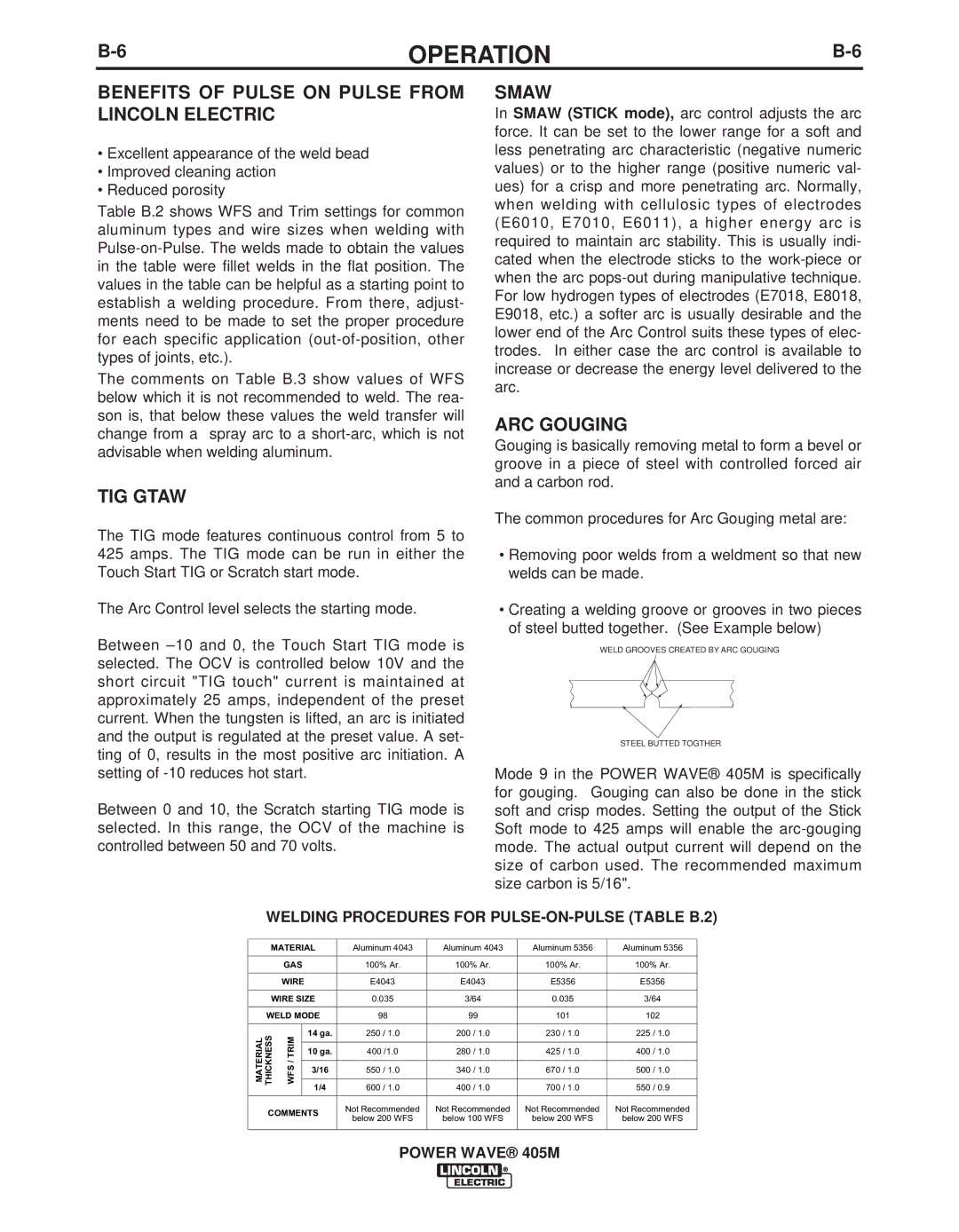IM917-A specifications
The Lincoln Electric IM917-A is a highly advanced welding machine that caters to the needs of industrial and commercial applications. Designed for both expert welders and those new to the craft, this machine offers a rich combination of features and technologies that enhance performance and usability.One of the standout features of the IM917-A is its robust inverter technology. This innovation allows the machine to provide consistent arc stability and improved control, even at low amperages. This means welders can achieve precision results in various materials, including carbon steel, stainless steel, and aluminum, without the risk of burn-through or warping. Additionally, the inverter design contributes to the IM917-A’s lightweight profile, making it portable and easy to transport to job sites.
The IM917-A employs advanced digital control systems that allow for precise adjustments and monitoring. Welders can access various pre-set programs tailored for different welding processes, significantly speeding up setup times. The intuitive user interface ensures that operators can quickly navigate through settings, achieving optimal parameters for each specific task. This ease of use makes the IM917-A accessible to less experienced welders while meeting the demands of seasoned professionals.
Another noteworthy characteristic of the IM917-A is its versatility. It supports multiple welding processes, including MIG, TIG, Stick, and flux-cored welding. This multi-process capability makes it an ideal machine for workshops looking to maximize their productivity without investing in multiple units. The ability to switch between these processes seamlessly allows users to adapt to various project requirements swiftly.
Safety is prioritized in the design of the IM917-A. It is equipped with features such as over-temperature protection and automatic shutoff, ensuring safe operation during prolonged use. Additionally, its durable construction and high-quality components enhance its reliability and longevity, making it a wise investment for businesses.
In conclusion, the Lincoln Electric IM917-A is a formidable choice for welders of all skill levels. Its combination of advanced inverter technology, user-friendly digital controls, versatile welding processes, and essential safety features sets it apart in the competitive welding equipment market. Whether for commercial, industrial, or even artistic applications, the IM917-A promises to deliver excellent performance and reliable results.

